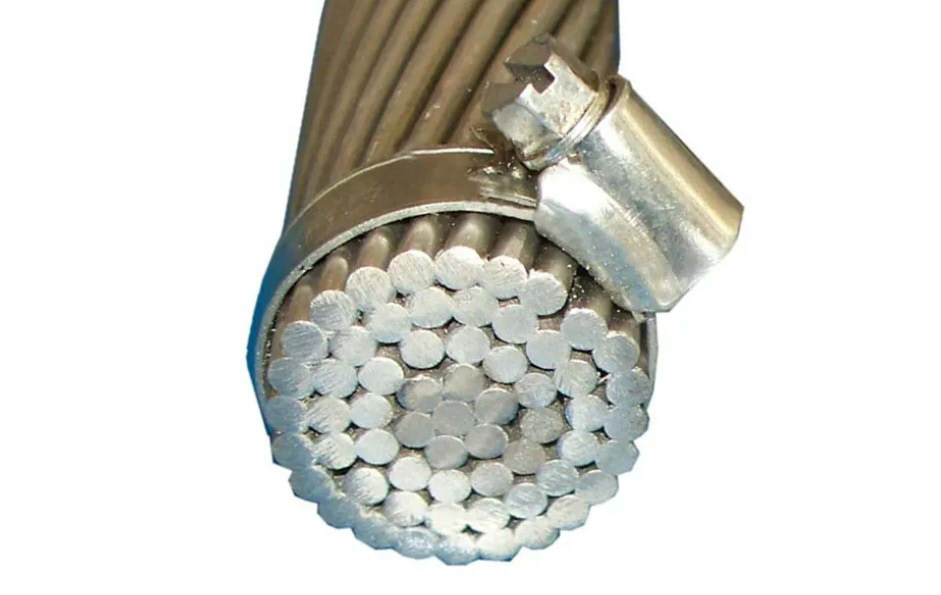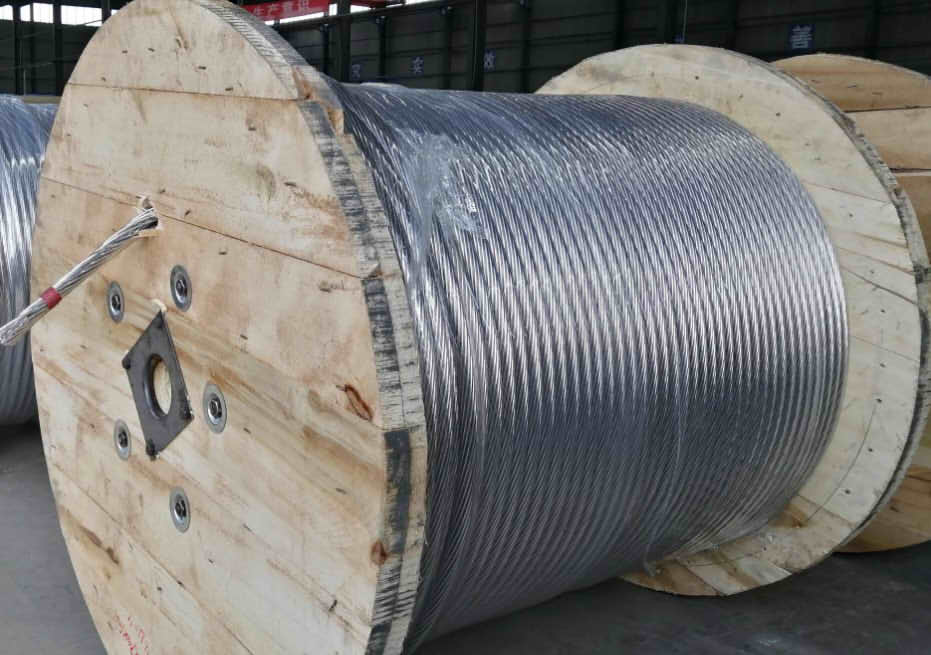Воздушные проводники ACSR представляют собой алюминиевые многожильные проводники со стальным сердечником.. Этот голый проводник используется в воздушных кабелях.. Он имеет преимущества простой структуры, простота монтажа и обслуживания, низкая стоимость линии и большая пропускная способность.

Особенности воздушных проводников ACSR
Воздушный провод ACSR пригоден для прокладки через реки и другие особые географические условия.. Он обладает хорошей электропроводностью, механической прочностью и прочностью на растяжение.. Если используется кабель ACSR, Расстояние до башни можно увеличить, а количество опор башни можно уменьшить.. Поэтому, этот проводник широко используется в воздушной передаче и распределительные линии различного уровня напряжения.
Сталь прочнее алюминия, что увеличивает механическое натяжение проводника. Сталь также имеет меньшую эластичность и удлинение.. Это может увеличить механическую нагрузочную способность воздушных кабелей.. Алюминиевые многожильные кабели со стальным сердечником имеют меньший коэффициент теплового расширения при токовой нагрузке.. Эти свойства позволяют ACSR провисать значительно меньше, чем проводники AAC..
В США для наружной скрутки обычно используются алюминиевые сплавы 1350-H19.. и Канада, и 1370-H19 в других местах. Оба они имеют содержание алюминия 99.5% или больше. Закалка алюминия в случае H19 означает особо твёрдый.. Для продления срока службы используемых проводников, стальной сердечник обычно оцинкован или покрыт другими материалами для предотвратить коррозию. Для различных проводников ACSR, диаметр как алюминия, так и стали различается.
Кабель ACSR по-прежнему опирается на прочность алюминия на разрыв., он просто усилен сталью. Из-за этого, его постоянная рабочая температура ограничена 75 °С. Кабели ACSS, которые полностью полагаются на прочность стали, может использоваться при температуре до 250 °С.

Обновление ACSR - АССК Дирижер
С развитием технологии производства в кабельной промышленности, Были изобретены проводники ACCC с использованием углеродного волокна вместо стальных сердечников.. По сравнению с кабелями ACSR, Воздушные кабели ACCC легче по весу. Это потому, что он использует легкий, Композит из углеродного волокна небольшого размера в качестве сердечника. Углеродное волокно не только увеличивает общую несущую способность кабеля., но также уменьшает размер ядра.
По сравнению с проводниками ACSR того же диаметра, Проводники АССС обеспечивают удвоенную допустимую нагрузку по току. Поскольку воздушные кабели ACCC могут выдерживать температуры до 200 °С, они могут эффективно решить проблему провисания кабеля, вызванного высокими температурами.. Кроме того, благодаря небиметаллической конструкции, Воздушные кабели ACCC также устойчивы к коррозии..
Существующие воздушные кабели реже модернизируются путем демонтажа старых линий и последующего возведения новых опор.. Этот метод не только дорогостоящий, но также имеет длительный период строительства. Это увеличивает стоимость проекта и в определенной степени удлиняет сроки строительства.. Длительные отключения при возведении новых линий также могут повлиять на количество имеющихся устройств и надежность электроснабжения сети..
Выбор новых воздушных кабелей в качестве прямой замены исходных кабелей позволяет использовать оригинальное линейное оборудование и сводит к минимуму модернизацию.. Многие из текущих модернизаций воздушных линий ACSR являются прямой заменой проводников ACCC.. Однако, стоимость кабелей ACCC высока, и если требования к пропускной способности кабеля не слишком высоки, все же экономичнее выбирать проводники ACSR.